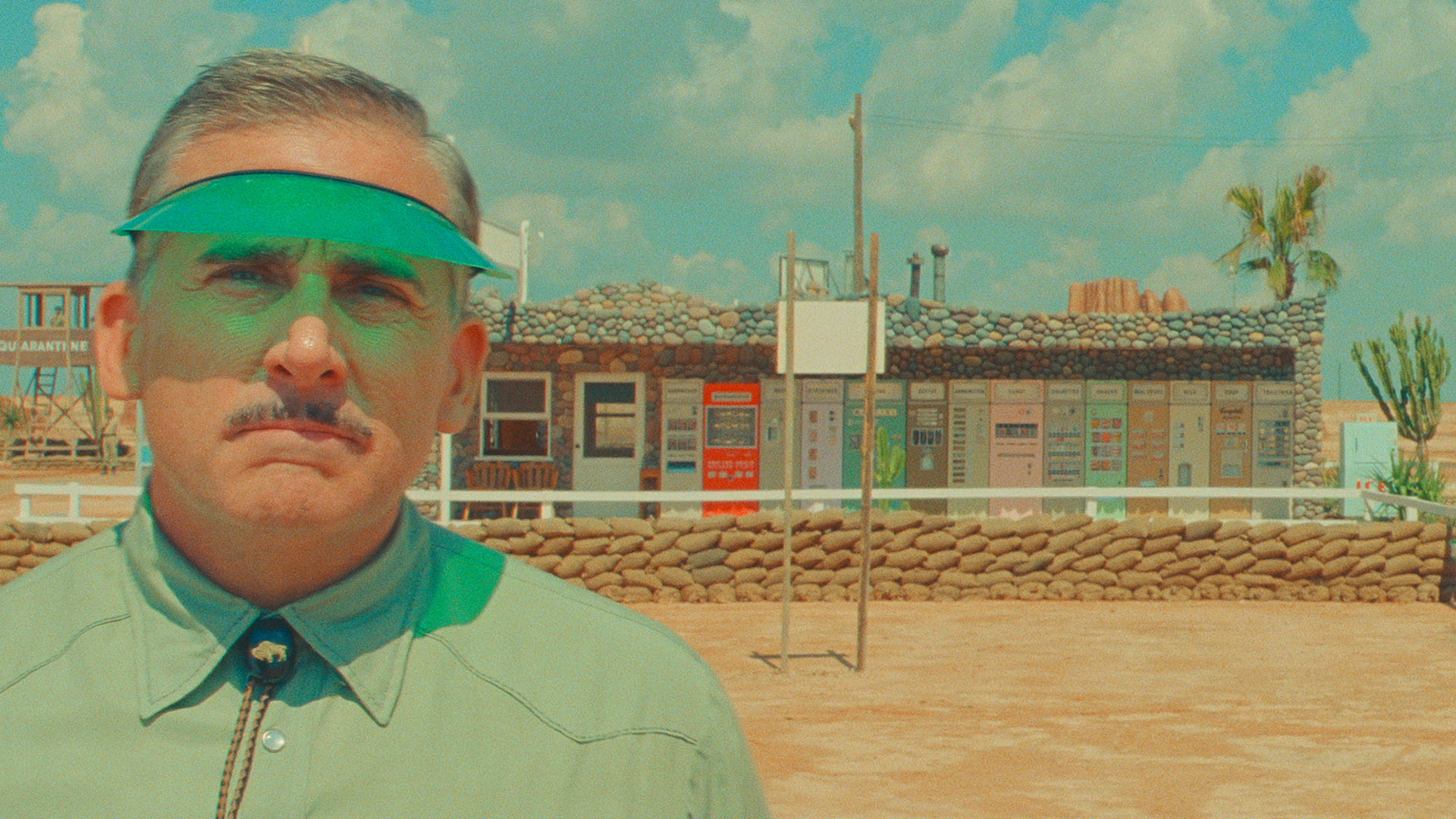Asteroid City refines and redefines Wes Anderson’s unique style

Wes Anderson is back with Asteroid City, his new feature film stacked with both regular cast members and fresh faces, and set in a fictional American desert town circa 1955. Aesthetically, it might be the simplest Wes Anderson feature to date, writes Katie Smith-Wong.
Premiering at Cannes 2023, Asteroid City—the latest film by Wes Anderson—is a sci-fi comedy that takes place in 1950s America. The film stars an extravagant ensemble cast that includes Tom Hanks, Steve Carrell and Margot Robbie, as well as several recurring Anderson collaborators such as Edward Norton, Jason Schwartzman and Tilda Swinton.
When the film opens, we see the monochrome beginnings of a stage production—the eponymous “Asteroid City”, which is written by playwright Conrad Earp (Norton). The narrator (Bryan Cranston) sets up the stage (literally), outlining the setup of the play before the audience is swiftly transported to Asteroid City, a desert hamlet with only 67 residents and a huge crater that is a hub for space scientists. It is also the location of an annual Junior Stargazer convention that sees the gathering of a group of eccentric characters, ranging from gifted youngsters to a singing cowboy troupe. However, the unexpected appearance of a special visitor unites them in their confusion and curiosity while causing Asteroid City to become an unexpected tourist attraction overnight.
With a cast so large, it becomes all too easy for supporting characters to get lost despite continued efforts to accommodate them in his picture—as is the norm for a lot of Wes Anderson’s films. In addition, having several cast members appear in both the coloured and monochrome sections of Asteroid City denies actors new to Anderson’s world such as Robbie, Hanks and Hong Chau a chance to develop their roles.
However, Asteroid City is mostly about a lot of people connecting with each other, whether romantically, platonically or familially. A simple concept it may be with its elevated combination of space exploration, modern technology and alien paranoia, the COVID-inspired narrative, folksy soundtrack, and retro setting bring out buried yet personal emotions among the ensemble. This, in turn, causes the characters to question their own lives and connections, whether it is lost/first love, the (un)conditional love of a parent, or—in the case of the film’s young geniuses and even schoolteacher June (Maya Hawke), the futility of one’s intelligence (superior or otherwise) in the face of the unknown.
This emotivity provides some of Asteroid City’s standout interactions, which include candid yet cold conversations between war photographer Augie (Schwartzman) and film star Midge (Scarlett Johansson) and the awkward romance between Augie’s son Woodrow (Jake Ryan) and Midge’s daughter Dinah (Grace Edwards). Unfortunately, the film’s tone shifts as soon as things start to get too deep, so audiences are left yearning for Asteroid City’s poignancy (and substance) among its wistfulness.
Amid the melee of characters is the tumultuous development of a theatre production, which sees a dedicated director (Brody) forsake his relationship for his art and a playwright developing his works. It may sound straightforward but the penny drops when a confused and anxious actor solemnly confesses to his director: “I don’t know what this play is about”. This simple statement can easily refer to Asteroid City itself, which, despite its conventional sci-fi elements, isn’t overly indulgent in terms of plot. It is consistently on the precipice of succumbing to style over substance, but screenwriters Anderson and Roman Coppola manage to rein in the narrative to mildly adhere to its deeper themes.

This may feel ironic, given that aesthetically, Asteroid City might be the simplest Wes Anderson feature to date. Although it has familiar elements such as symmetrical frames, knolling and a streamlined yet bold colour palette (in this case, brightened neutral colours amid saturated turquoise-blue tones), the production predominately takes place in the eponymous hamlet. The ironically small scale of the “city” keeps the story confined to one single area that not only makes the events of the film feel more fantastical but sows a deeper appreciation of simple storytelling that adheres to the world of classical theatre.
Anderson and Coppola also cleverly pay their respects to the art via various Brechtian techniques, which remind audiences of what they are watching—a theatre production coming to life. These scenes also brilliantly provide a rarely seen meta-reference to Anderson’s own filmmaking style that highlights the use of frequent collaborators such as Scarlett Johansson, Jason Schwartzman, Willem Dafoe and Adrian Brody.
In comparison to Wes Anderson’s previous works, Asteroid City feels like a step back towards simpler filmmaking that both refines and redefines his unique style. Its vibrancy, creativity and charm are in abundance but its narrative falls short of expectations.




















